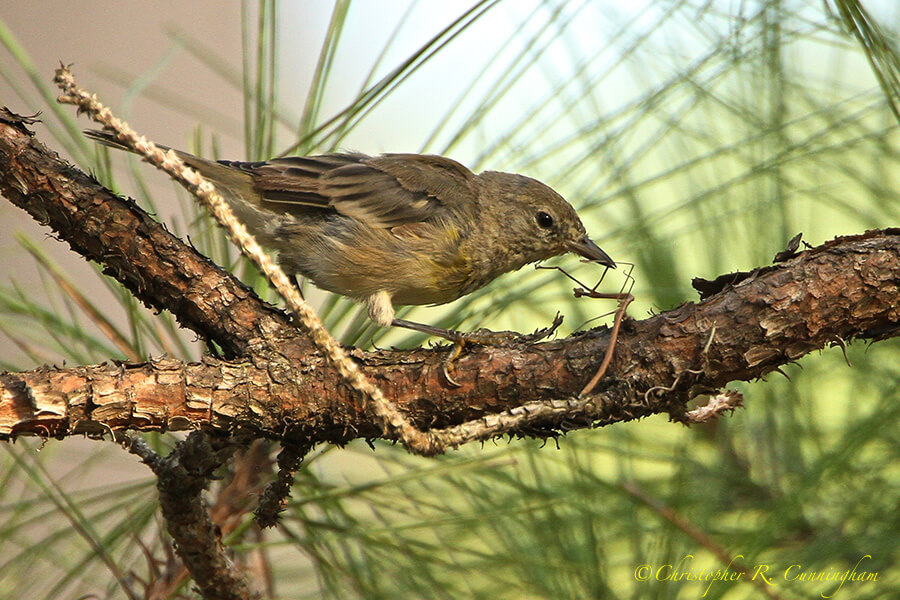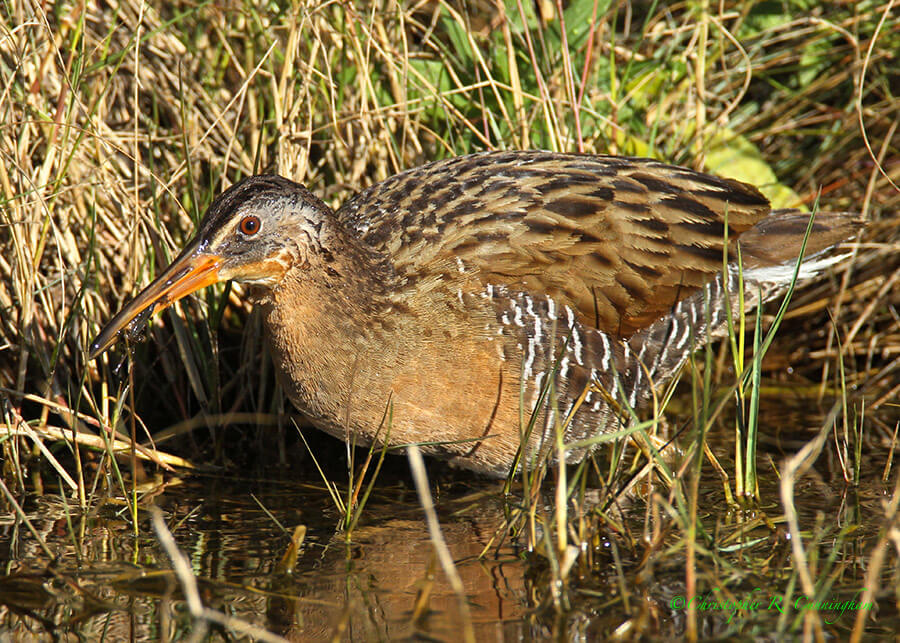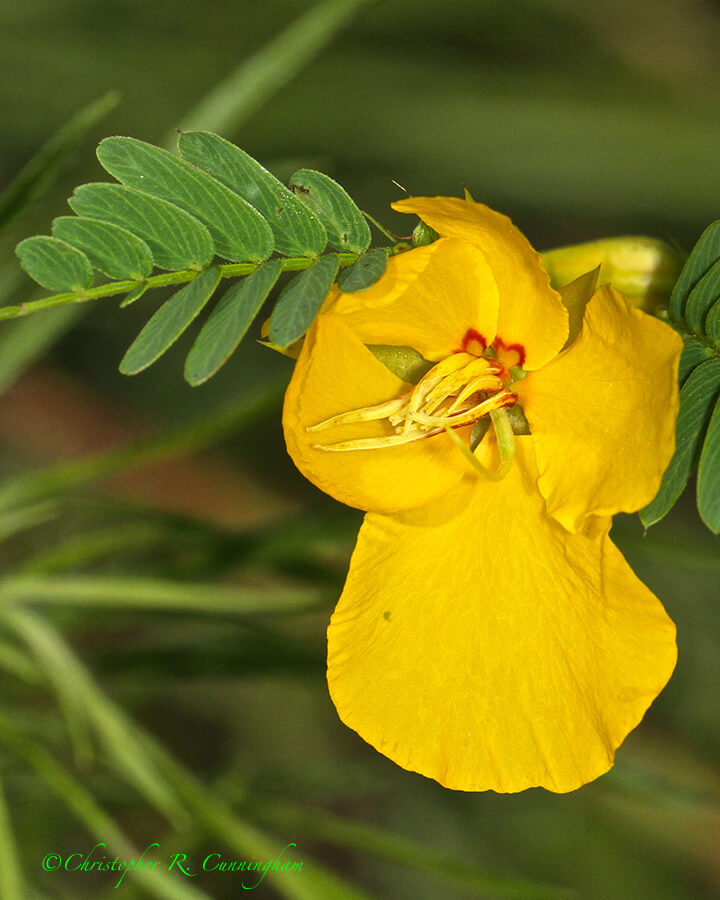Photography helps people to see.–Berenice Abbott

From time to time, I’ll be going through old images when I suddenly discover something I overlooked or misinterpreted in the field. For example, I remember photographing the scruffy young Eastern Bluebird above because I had a hard time figuring out what the heck it was (until I saw another one in better plumage!).
I also remember being perplexed about why it was gathering nesting materials in November—normally that sort of thing should end around July or August. I probably just scratched my head and chalked it up to Texas and our subtropical climate. Birds here in the swelter zone can sometimes breed outside their usual temperate region breeding seasons.
But upon re-inspection of the image (I’m sure I chimped my settings in the field!) all is revealed: There are no nesting materials, but rather a twiggy-looking meal, namely a praying mantis! This has happened a few times now with mantids and phasmids, so it’s something to watch out for. Sometimes birds with sticks (apparently) actually have walking sticks!

Having images to study hours or months later allows for testing your notions of what you saw in the field and to even make brand new discoveries ex post facto. The Clapper Rail above, for example, was hunting along the margin of the water at ANWR last winter. I could tell that the bird was grabbing small fish and what looked like leeches. I have seen and photographed waders and other water birds eating leeches. Upon closer inspection of the images, though, it looks like this Clapper Rail has a big juicy planarian its beak—a first sighting for me.
On the other hand, I know that I see less overall in the field in the first place when I am photo-birding, rather than binocular birding. Just like the old joke where the guy is looking under the street light for his lost keys because this is where the light is best, it’s sometimes tempting to photo-bird only where the light is good. I have caught myself ignoring movement in gloomy or brushy areas simply because I knew that I couldn’t get a decent shot. So, in this case, contrary to the quote above, photography can help birders not to see.

On a final note, Brazos Bend State Park re-opened July 8, and I was among the first members of the public to return post-flood. During the first half-hour there, I could feel the stress of life melt away. My general impression, though, is that there were not as many birds around as usual. I suspect that ground-nesting species of birds were drowned out. On the other hand, the mosquito and gnat populations were certainly healthy, as was the frog population. Perhaps the waders will rediscover the park and its bonanza of amphibians.
Most interesting to me was that the Prairie Trail looked different from usual as regards summer wildflowers. A few regulars were around like widow’s tears, but what struck really me was the profusion of partridge-pea (Chamaecrista fasciculata). This common legume is native to most of the eastern U.S. and is known to thrive in disturbed areas, such as those recently burned, and apparently recently flooded. It will be interesting to document how quickly the park returns to its former glory.
©2015 Christopher R. Cunningham. All rights reserved. No text or images may be duplicated or distributed without permission.